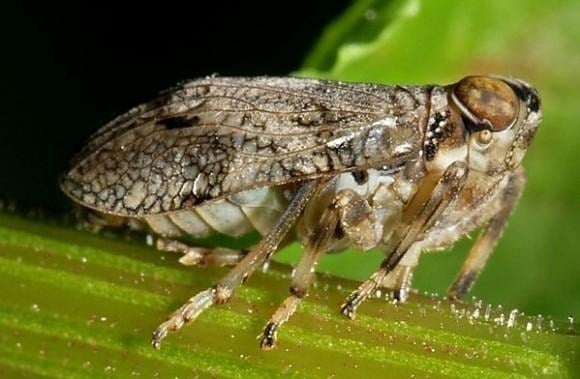Planthoppers are the only known creatures known to possess a gear mechanism. The Issus coleoptratus is the first type of planthopper to describe its gear-like mechanism formally. Most of the species under the Issus genus are found in Europe, Near East, and North Africa.
According to a new study, the Issus coleoptratus, a plant-hopping insect, is the first living creature to have functional gears. When the insect jumps, the two interlocking gears on its hind legs help synchronize the legs.
The Planthopper’s Gears for Hopping
Each leg has a curved strip of 10 to 12 gear teeth that attach to the insect’s trochantera. Malcolm Burrows described these structures in 1957, but no one had demonstrated that the gears worked.
The hind legs of insects can be arranged in two ways. The legs of grasshoppers and fleas move in different planes at the sides of their bodies, whereas the legs of champion jumping insects, such as planthoppers, move in the same plane beneath their bodies. As a result, planthopper legs must be tightly coupled.
If there were to be a slight timing difference between the legs, then the body would start to spin.
Malcolm Burrows, Emeritus Professor of Neurobiology at the University of Cambridge in the United Kingdom
According to the study findings, detailed in the Sept. 13 issue of the journal Science, the gears synchronize the movement of the hind legs to within about 30 microseconds of each other, which is much faster than the nervous system could achieve.
Burrows noticed that the gears slipped past each other at times, but when they finally engaged, the two legs became synced.
Burrows experimented on a dead planthopper: when he pulled one of its legs, both legs extended rapidly. Thus, he claims that the mechanics of the skeletal system can synchronize the legs on their own. (Source: Live Science)
What Kind of Gears Do Immature Planthoppers?
Only immature planthoppers, or nymphs, have cogs lost during the final molt. Adult planthoppers achieve the same effect as gears by using friction between their legs.
According to Burrows, adults may abandon their gears because the gear teeth can break, endangering the insect’s survival. Nymphs shed their exoskeleton five or six times before adulthood and can repair the damage, whereas adults only have one body.
Adults have larger, more rigid bodies, so friction may be a more effective way for them to sync their legs.
It’s very exciting to see one after another component of human, mechanical engineering being discovered in the living world, too.
Alexander Riedel, Curator of the State Museum of Natural History Karlsruhe in Germany
There are a few other animals that have gear-like structures. As the name implies, the cogwheel turtle has a decorative gear on its shell. Some reptiles have cogwheel heart valves, which increase blood flow resistance. Furthermore, some insects have gear-like knobs that produce chirping sounds. However, none of these structures function as a gear in the traditional sense.
Burrows first encountered gear-legged insects in a colleague’s garden in Germany. He looked for them in England but couldn’t find them. (Source: Live Science)
Image from
